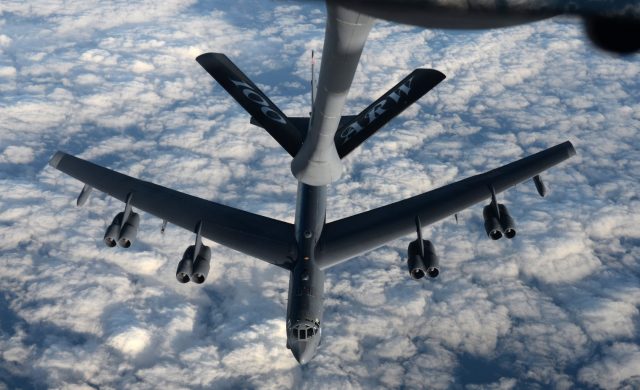The US Air Force’s B-52 is set to undergo a radar modernization program, enhancing its mission capabilities with Active Electronically Scanned Array (AESA) system installation, and extending the aircraft’s lifespan beyond 2050.
By replacing outdated radar technology from the 1960s, the implementation of the AESA-based systems in the B-52 Stratofortress aircraft is set to enhance its navigation and targeting capabilities, propelling the aircraft towards a record-breaking 100 years of service.
The new radar is specifically designed to augment situational awareness, navigation, and targeting capabilities. Furthermore, its adaptability enables the incorporation of future threat-mitigating functionalities through software.
This installation marks one of the largest upgrades in history. The endeavor is projected to cost around $2.8 billion, and the anticipated timeframe for achieving initial operational capability is 2027.
During the Air Force’s Life Cycle Industry Days conference, Col. Louis Ruscetta, the senior materiel leader of the B-52 division, expressed the Air Force’s objective to pinpoint any potential challenges or areas of friction. This includes assessing the availability of sufficient space, power, and cooling required to support the numerous modifications.
Boeing and Raytheon are both involved in the installation process.
In order to incorporate the Raytheon AN/APG-79 radar, the B-52 aircraft will require modifications to its cooling systems. Moreover, the radar will be positioned in an inverted manner, allowing it to effectively observe the ground instead of the upward positioning typically utilized for the Super Hornet, as explained by Col. Louis Ruscetta.
The Air Force has recently concluded the critical design review and is presently constructing a systems integration lab. This lab will serve as a testbed, enabling the Air Force to explore the integration of the radar onto the B-52 before implementing any modifications to the actual aircraft.
“Boeing is the OEM [original equipment manufacturer] for the B-52, so their long-standing history and knowledge of the platform is really critical to making sure we can get this [AESA] out as quickly as possible,” said Col. Louis Ruscetta, Senior Materiel Leader for the Air Force Life Cycle Management Center’s B-52 Program Office.
“We are also working with Raytheon on the radar side. Overall, the partnership helps ensure we have a government off-the-shelf solution that minimizes development and helps reduce both the development and test timelines,” he added.
In parallel, the Air Force is currently working on the B-52 Commercial Engine Replacement Program, which involves adding eight new F130 engines and several supporting modifications to each B-52. The contract, awarded to Rolls-Royce for $2.6 billion, includes new nacelles, pylons, generators, and cockpit display systems.



























